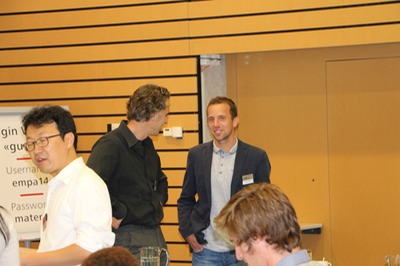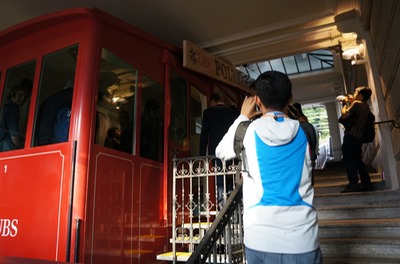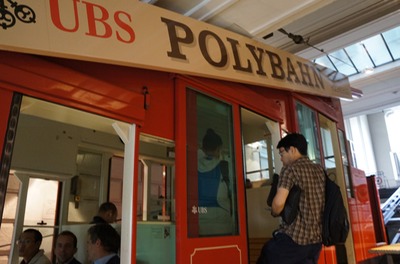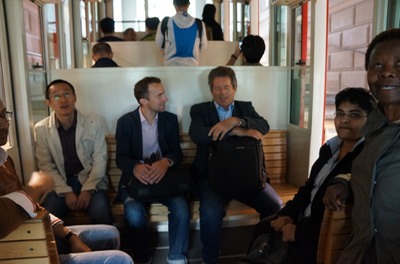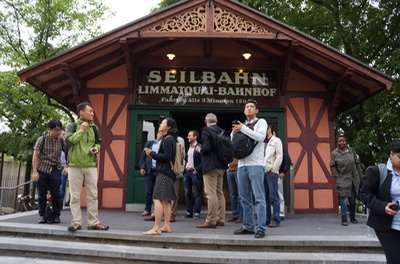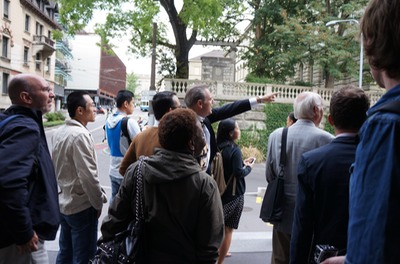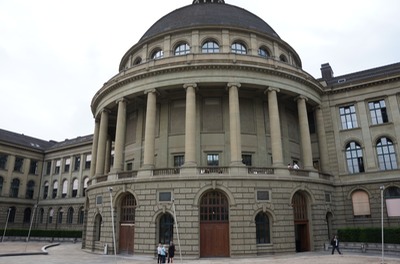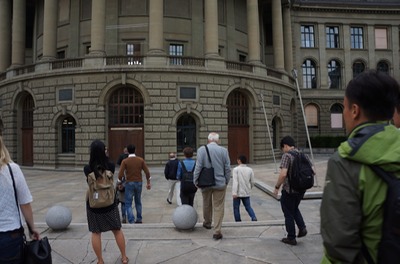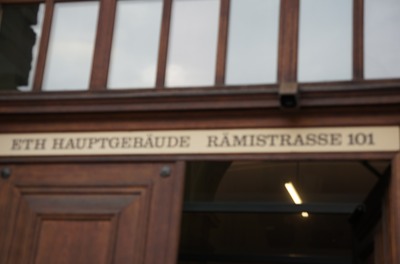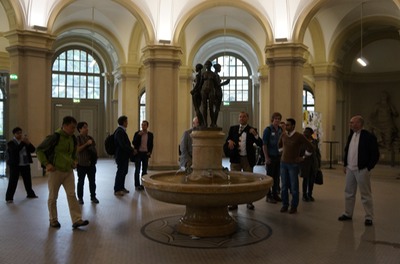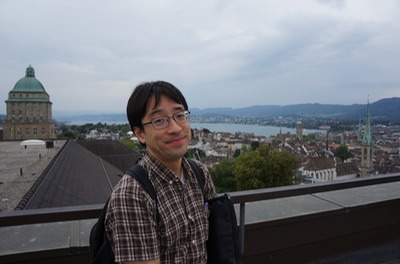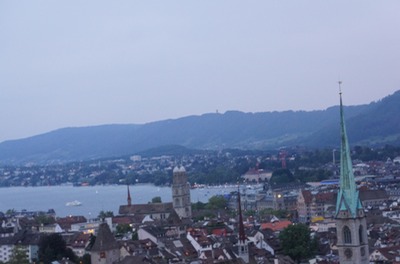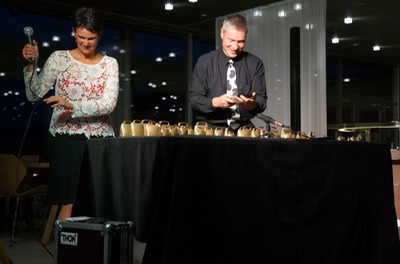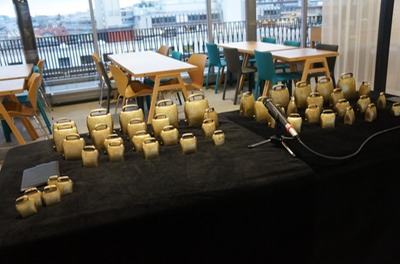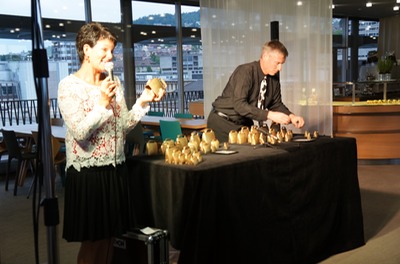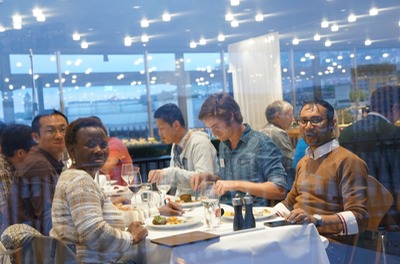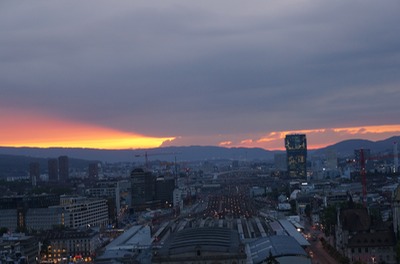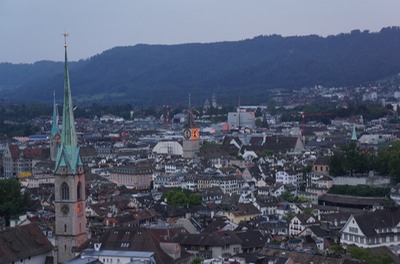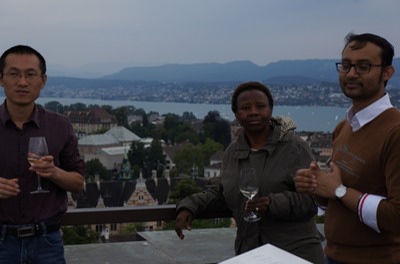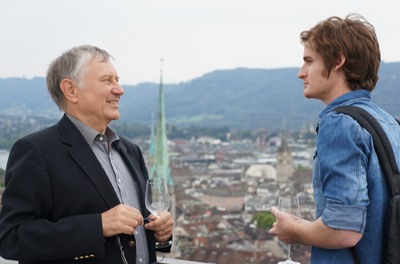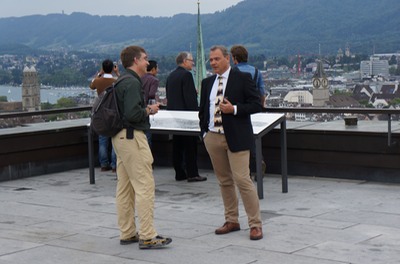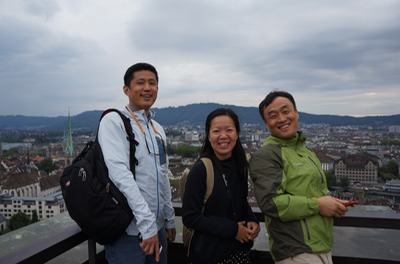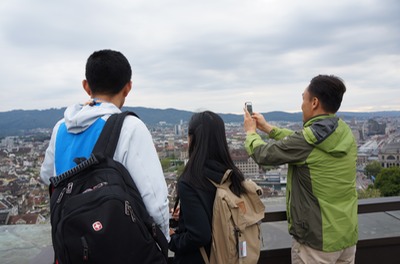1. Summary
Progress in instrumentation at synchrotron radiation sources has become beneficial for energy materials research. For a snapshot of the current trends and challenges in electrochemical and catalysis and solar energy research using synchrotron radiation, an international exploratory workshop was held at Empa Akademie in Dübendorf from 17-19 August 2015.
30 Participants and speakers from 12 countries delivered presentations ranging from x-ray scattering, catalysis and photoelectrochemistry to thermodynamics and “learning -from-nature”.
This was a follow-up on a similar workshop in May 2013 at Empa and Swiss Lightsource. We have published the outcome of the recent 2013 SNF/Empa/PSI workshop in a synchrotron specific journal [A. Beni, A. Braun, T. Huthwelker, J. A. van Bokhoven, Meeting Report: Exploratory Workshop on Soft X-rays and Electrochemical Energy Storage and Converters, Synchrotron Radiation News 2013, 26 (5), 36-38].
2. Scientific aspects
2.1 Introduction of the research subject
This workshop is a 2-year follow-up on the "International Exploratory Workshop on Soft X-rays, Electrochemistry, and Energy Materials (Swiss National Science Foundation project # 147413), which was held at Empa and PSI in June 2013. This time, we narrowed down the topic from the broad field of "Energy Materials" to specifically about materials in photoelectrochemistry, catalysis and electrocatalysis. This combination of topics is relevant for production of renewable and CO2-neutral solar fuels or for Fischer-Tropsch syntheses of liquid fuels from solid waste or carbon. There is currently many scattered activity in this field also in Switzerland. New development worldwide is that basic science concepts on materials can be analysed now at the component level and device level during operation thanks to advancement in analytical instrumentation with synchrotron based x-rays. This development will allow in future for better understanding of materials synthesis, processing and function issues in energy converters during operation. Catalysis work is being done at ETHZ, PSI, Univ. Berne and Univ. Basel, and Empa, for example. Empa and PSI/ETHZ are currently using x-ray spectroscopy for this purpose and building up expertise.
2.2 Scientific aims and methods of the workshop
The aim of the workshop is to receive a contemporary snapshot of activities in the aforementioned topic by bringing together intellectual capacity and broad experience on catalysis, electrocatalysis, photoelectrochemistry and specific experience on the analytic assessment of relevant materials properties using x-ray spectroscopy, together with the diagnostics of components for device application. Invited speakers shared their historical perspective on renewable energy research; more junior level researchers shared their recent research experience with actual case studies in their presentations. Same like 2 years ago, we had critical discussions on experimental and conceptual limits and opportunities. Another aim is that researchers from South Africa active in solar energy conversion and solar fuels become familiarised with our methodological approach towards technology development by advances in basic science. We had speakers who addressed relevant materials issues from the perspective of bio-interfaces (natural to artificial photosynthesis) and from the perspective of exposure of matter to atmospheric and environmental conditions (geochemistry). The methods for achieving the aim are the presentation of invited talks covering the field, plus discussions and panel discussions.
2.3 Expected results
The workshop helped define better the needs of the energy materials and catalysis community in Switzerland with respect to hardware and infrastructure planning at the Swiss Light Source and at Empa, latter with respect to a laboratory-based near ambient pressure XPS instrument, for example. Chemical engineers will get an idea about the new experimental facilities worldwide and at PSI SLS for the analysis of electrocatalytic and catalytic systems. Another result would be that we demonstrate by this workshop that Switzerland is actively engaged in keeping pace with the international visible development in near ambient pressure XPS for catalysis and energy materials research. From this workshop we will pick up momentum for joint experiments and joint studies.
3. Organisational aspects
3.1 Workshop Programme
Topics include: catalysis, electrocatalysis, photoelectrochemistry, x-ray/electron spectroscopy, nanoparticles, and molecular catalysts, lessons about electrode materials from the perspective of geochemistry and bio-electric interfaces.
Milestone will be a concluding remark by a workshop panel about the feasibility, suitability and limitations and potentials of ambient and near ambient pressure x-ray and electron spectroscopy for model systems and real-life systems and their functional assessment with combined chemical reaction engineering and electrochemical or electroanalytical assessment under operando conditions. This will be input information for the acquisition of a dedicated NAP-XPS instrument at Empa and/or at PSI SLS.
Monday 17 August
09:20 – 09:30
Opening Remarks
Artur Braun, Empa
09:30 – 10:10
From Carbon Dioxide Back to Fuel: Reversing the Arrow of Time
Emil Roduner, University of Pretoria
10:10 – 10:30 Tea break
10:30 – 11:00
The role of surface oxide and metal-oxide interfaces in catalytic activity and deactivation; ambient pressure XPS and IR studies on nanocatalysts under CO oxidation
Jeong Young Park, Korea Advanced Institute of Science and Technology
11:00 – 11:30
Towards in operando characterization of catalyst materials for CO2 electro-reduction
Peter Broekmann ,University of Bern
11:30 – 12:00
An overview of photocells and photoreactors for electrochemical water splitting based on semiconductor materials
Mmantsae Diale, University of Pretoria
12:00 – 14:00 Lunch EMPA SV Restaurant
14:00 – 14:30
Correlation between surface electronic structures and chemical reactivity
Bongjin Simon Mun, Gwangju Institute of Science and Technology
14:30 – 15:00
Interfacial, Dimensionality, and Confinement effects in Oxide Semiconductors
Lionel Vayssieres, Xi’an Jiaotong University
15:00 – 15:30
Ultrafast dynamics studied by time-resolved x-ray diffraction
H. Wadati, University of Tokyo
15:30 – 15:50
Nanocatalysts at CPUT
Mahabubur Chowdhury ,Cape Peninsula University of Technology
15:50 – 16:10 Tea break
16:10 – 17:30 Discussion Round
Tuesday 18th
09:30 – 10:00
The Hematite-Pyrite Tandem Cell with Implications
Carrick M. Eggleston, University of Wyoming
10:00 – 10:40
(Photo)electrocatalysis as a Challenge for Bio-mimetics
Helmut Tributsch, Carinthia University for Applied Sciences
10:40 – 11:00 Tea break
11:00 – 11:30
In situ studies of surface reactions by fast XPS
Hans-Peter Steinrück ,Universität Erlangen-Nürnberg
11:30 – 11:50
A self-assembled, multicomponent water oxidation catalyst
Rita Toth ,Empa
12:00 – 14:00 Lunch EMPA SV Restaurant
14:00 – 14:30
Operando Fe L edge X- ray spectroscopic study on an atomic layer deposited n- type Hematite during photo electrochemical solar water splitting
Debajeet K. BORA, Empa
14:30 – 14:50
A couple of short stories on computational core-level spectroscopy
Daniele Passerone ,Empa
14:50 – 15:20
Preparation IrO2 based Oxygen Evolution Electrode
Shankara Gayathri Radhakrishnan, University of Pretoria
15:20 – 15:50
Operando X-ray Studies of Electrocatalysis
Anders Nilsson, Stockholm University
15:50 – 16:00 Tea break
16:00 – 17:30 Discussion Round
Wednesday 19th
09:30 – 10:00
Facile Nonpolar Organic Solution-Process to Nanostructure Hematite Photoanode with High Efficiency and Stability for Water Splitting
Jian-Jun Wang ,Empa
09:50 – 10:20
Towards realistic models of oxide-supported metal catalysts
Martin Sterrer, University of Graz
10:20 – 10:40 Tea break
10:40 – 11:10
Study of modified catalytic activity under reactive conditions using APXPS
May Ling Ng, Stanford University
11:10 – 11:30
Mechanisms of semiconductor photocatalytic water-splitting using chemical additives and photocatalyst modification techniques
Gareth Moore, University of Pretoria
11:30 – 12:00
Probing Solid-Liquid Interface Using APXPS
Zhi Liu, Shanghai Institute of Microsystem and Information Technology
12:00 – 12:20
Seize the Sun Going Down - Oxynitrides for Solar Water Splitting
Songhak Yoon, Empa
12:20 – 12:35 Closing Remarks
12:35 – 14:00 Lunch EMPA SV Restaurant
3.2 Venue
The workshop took take place at Empa Akademie in Dübendorf, located right between the City of Zürich and Zürich International Airport, in close proximity to the Swiss Light Source in Villigen's Paul Scherrer Institut. International participants can travel with ease to Dübendorf from the airport by using the tram.
3.3 Funding
Funding: Swiss National Science Foundation Grant # IZ32Z0-147413, Swiss South African Joint Research Project # IZLSZ2-149031, Swiss Federal Office of Energy no° SI/501276-01, and by Empa.
4. Partnership aspects
4.1 List of participants
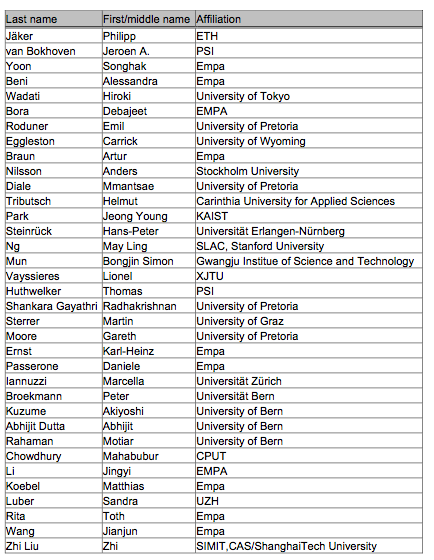
4.2 Complementarity aspects
We bring together internationally renowned experts from electrochemistry (fuel cells, photoelectrochemical cells, solar cells), X-ray and electron spectroscopy (XPS, NEXAFS, PES, valence band spectroscopy), synchrotron beamline operation (ALS, SSRL, SLS).
This workshop narrows down the scope of the previous workshop from 2013 in terms of analytical approach and in terms of application and device technology. Specifically, we focus on catalysis and electrocatalysis for solar fuel generation. The method of choice is x-ray spectroscopy applied operando and in situ at the solid-gas or solid-liquid interface. We have experts from analytical methodology and experts from materials science and device technology, and thus cover a wide range including basic science and application and technology.
We have a broad group of participants that cover similar levels in the intermediate age range. During the workshop, PhD students will attend, as well as postdoc level scientists in order to learn from the excellent diverse and multi-facetted expertise present at the workshop.
We have researchers who work on materials aspects, analytical methods aspects, function of components aspects, compatibility of electroanalytical and x-ray spectroscopy methods and their application in realistic operando studies.
